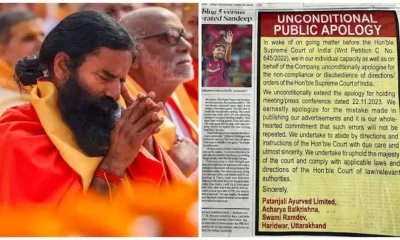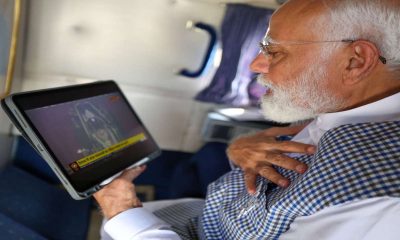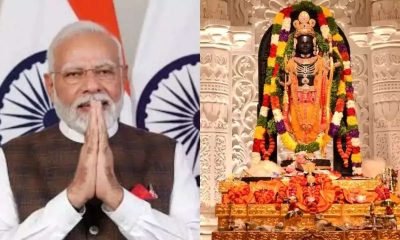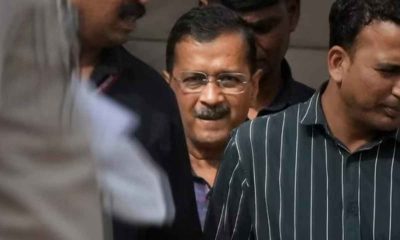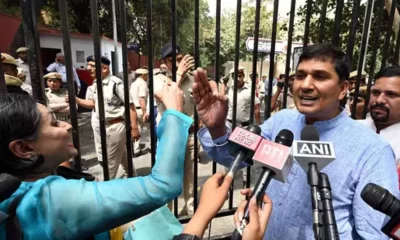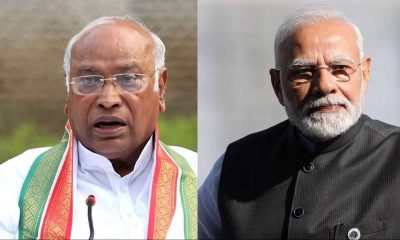India News
Three Mosques: “Muslim Generosity Would Electrify Hindu Masses”
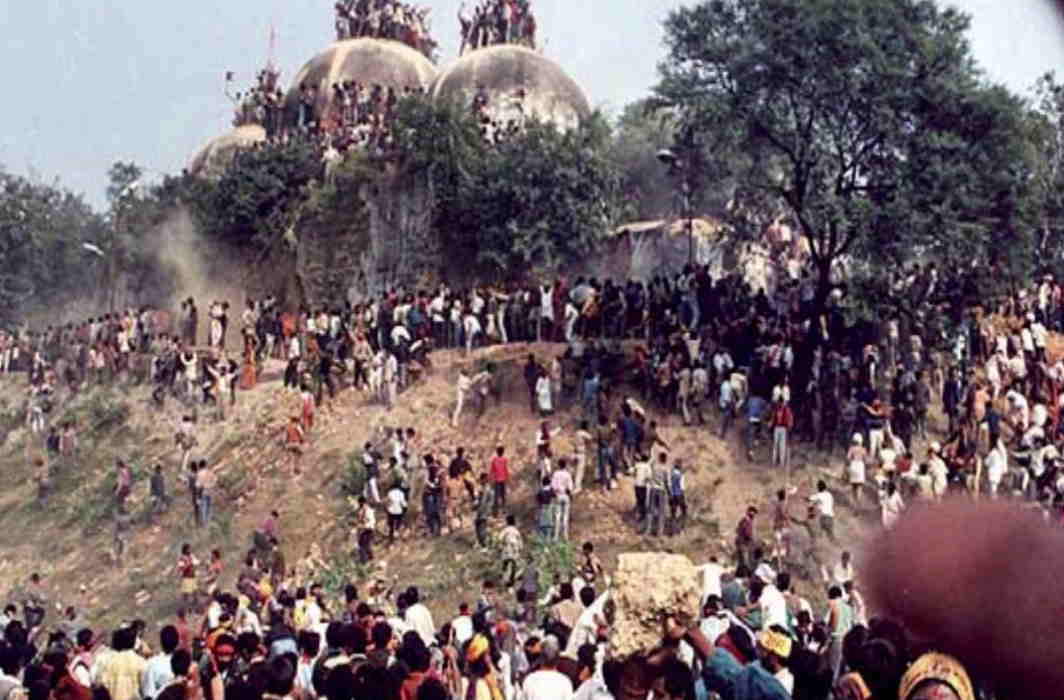
[vc_row][vc_column][vc_column_text]By: Saeed Naqvi
The 25th anniversary of Babari Masjid demolition will rekindle debate: why was it demolished, historical wrongs, Mandal Commission inviting a Mandir backlash, Hindu yearning for a Ram temple and so on. But the clinching evidence Judges of the Supreme Court, steeped in the case, might find interesting is a video recording of celebrations at ground zero, the site of the demolition soon after the traumatic event.
The first scene opens with a number of girls in a circle, clapping in unison and singing a song with the following refrain:
“Ab yeh jhanda lehraayega
saarey Pakistan pe”
(Now this flag will flutter over Pakistan)
The next scene shows a group of young men, delirious with excitement wearing bandanas around their heads, carrying lances. They lunge towards the camera, shouting:
“Bomb girega Pakistan pe
Bomb girega Pakistan pe”
(Bombs will fall on Pakistan)
Third scene consists of a handsome Swami with wavy hair. In his booming voice he spells out:
“Abhi hamein Lahore jana hai,
Rawalpindi jana hai…..”
The final scene has the late Bal Thackeray predictably announcing in very matter of fact tones, from his Mumbai residence:
“We are going to build the Ram Temple, and if the Muslims don’t like it, they can go to Pakistan.”
There was no mention of Ram or a temple, only a frenetic triumphalism over Pakistan. In the context of the demolition of a mosque which carried the name of the first Moghul Emperor, the celebrations appeared to settle multiple scores against a long chain of Muslim “marauders” and Muslims who mushroomed under their auspices and who eventually walked away with an independent country. Worse, they left behind almost as many of their co religionists in this country.
No one ever disputed the primacy of Ram in the Hindu belief system, but the demolition of the mosque was an instance of faith being placed in the service of politics. L.K. Advani’s 1990 Rath Yatra was designed to neutralize caste divisions aggravated by the Mandal Commission. Its purpose was to compact the Hindu caste pyramid teetering because of excessive exposure to identity Politics. The mosque and by extension, the Muslim, was to be the foil in this primary enterprise. This was the cement that would be filled into the crevices to stabilize the pyramid.
In this masonry for compacting Hindu society, heavy collateral damage would have to be borne by the Muslim. This collateral damage, in other words, was to be no meager side show. The scaling down of a thousand years of civilization associated with the “invaders” would be cathartic, even exhilarating for the majority. By that very token, it would be degrading for the largest minority ever in history.
Pakistan had become a part of the country’s internal politics even before the 1965 war when Prime Minister Lal Bahadur Shastri upturned Nehruvian secularism by seeking RSS volunteers for Civil Defence Duty. Indira Gandhi, Prime Minister after Shastri, felt the heat when she lost the 1967 elections in eight states.
Even during electoral adversity in the north, Indira Gandhi felt reasonably secure so long as her charisma lasted in the southern states of Karnataka and Andhra Pradesh. When these states were lost in 1982, she realized that the Congress rule could not be secured in the north without recourse to a shade of saffron. This shade she brought into play during the 1983 Jammu elections, harnessing Hindu sentiment against the Khalistan movement next door.
The 404 seats in a House of 533 that Rajiv Gandhi won in 1984, after Indira Gandhi’s murder, were interpreted by the Congress as Hindu consolidation against minority communalism. From the Sikh minority to the Muslim minority was an easy conceptual leap.
It was a moment of reckoning for the BJP, smarting with only two seats in 1984. It could not allow the Congress to steal the Hindu platform. Congress too would not give up the advantage. In 1986 it arranged for the locks of the Ram temple to be opened, having earlier pleased the obscurantist Muslims by upturning the Shah Bano judgement which provided maintenance to a divorced woman.
Then Rajiv Gandhi began the 1989 election from Ayodhya with a promise that he would usher in Ram Rajya. He allowed bricks to be laid for the temple’s foundation, exactly where the VHP had planned to.
To win this competition in Hindu radicalism, Advani’s Rath Yatra provided the BJP with an occasion to raise the stakes beyond the Congress reach. While Rajiv stood on a saffron platform, he was careful not to overtly offend the Muslims.
P.V. Narasimha Rao as Prime Minister reversed this ambidextrous approach. He slept while the Kar Sevaks pulled down the mosque. There was no ambiguity now. It was straightforward Hindu-Muslim polarization.
And now as 2019 elections approach, what should the Muslims do? My mother, who died three years ago, had accompanied my wife, daughter and me to Ayodhya to see the 1989 Shilanyas (bricklaying). She lived in Lucknow and we were there only for two days. This way, she thought, she would see more of us and also inform herself about the mosque in the news. After watching the grotesque drama this is what she said:
“A mosque of “fitna” (conflict) is not an auspicious place of worship. In any case, a Muslim can spread his prayer mat anywhere in the direction of Kaaba and say his namaz. A Hindu consecrates his idols in a temple.”
Muslims should, as an act of generosity, gift the disputed mosques in Ayodhya, Kashi and Mathura. “Hindu masses would be ecstatic.” I chose not to argue.
Maulana Kalbe Sadiq of the Personal Law Board, echoes the same sentiment.
“Even if Muslims win the case in the Supreme Court, they should make a gift of the land to the Hindus.” The Supreme Court can be the guarantor that communalism would not claim more monuments.
Masses will be electrified and communalists on all sides will be defeated, he says.[/vc_column_text][/vc_column][/vc_row]
2024 Lok Sabha Elections
Bollywood actor Neha Sharma campaigns for her father Ajit Sharma in Bhagalpur, Bihar
The Bollywood actor posted a video on her Instagram handle which showed her journey through various districts of Bihar, including Kishanganj, Banka, Purnea and Katihar. She was dressed in a traditional salwar kameez and was seen greeting and encouraging the public to cast their votes.
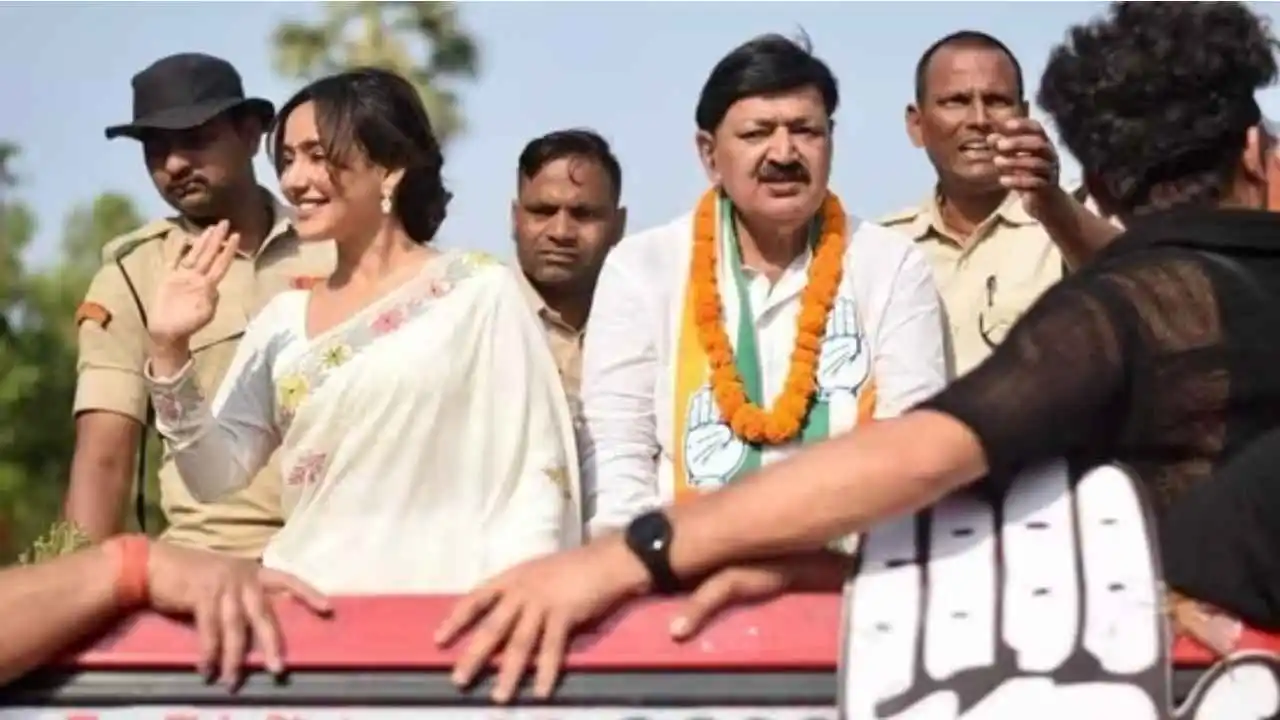
Bollywood actor Neha Sharma’s recent participation in a roadshow in Bihar has taken the internet by storm. Sharma, known for her roles in films like Tum Bin 2 and Crook, was seen supporting her father, Ajit Sharma, who is contesting from Bhagalpur Lok Sabha seat on a Congress ticket. The roadshow came amid speculations that the actor might enter politics. But, it is now clear that she was just campaigning for her father.
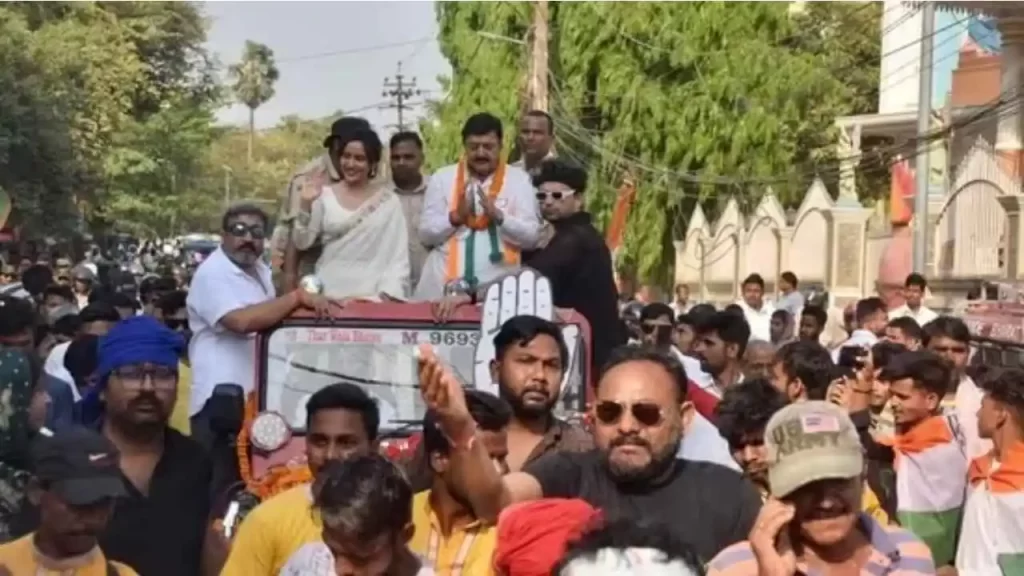
The Bollywood actor posted a video on her Instagram handle which showed her journey through various districts of Bihar, including Kishanganj, Banka, Purnea and Katihar. She was dressed in a traditional salwar kameez and was seen greeting and encouraging the public to cast their votes.
The actor received a warm reception and love from a large crowd in Pirpainti and Kahalgaon during her roadshow. She wrote on Instagram that it is said when someone gives one a place in their heart, then they live there forever. She said her heart is full of all the love and support she was receiving from the people. She thanked the people for the warm welcome she got in Pirpainti and Kahalgaon. Aapka pyar sar ankhon par.
Another video, circulating on social media showed the actor actively participating in her father’s election campaign in Bhagalpur. The election to the Bhagalpur Lok Sabha seat is set to take place in the 2nd phase on April 26. Ajit Sharma is representing the Congress and is up against JDU’s Ajay Kumar Mandal in this seat.
Earlier, there had been rumours and speculations that Neha Sharma might join politics. But many reports have clarified that she is not making her political debut yet. The Bollywood actor had been offered the opportunity to join politics by her father Ajjit Sharma but she is currently focusing on her acting career.
Education
Farmer’s son Nilkrishna Gajare Nirmalkumar from Maharashtra scores 100 NTA score in IIT-JEE Mains 2024
Nilkrishna Gajare’s father is a farmer and had to discontinue his own education after Class 12 as he faced financial difficulties. Gajare faced financial challenges growing up. However, his unwavering dedication and strategic approach to preparation set him apart from the crowd.
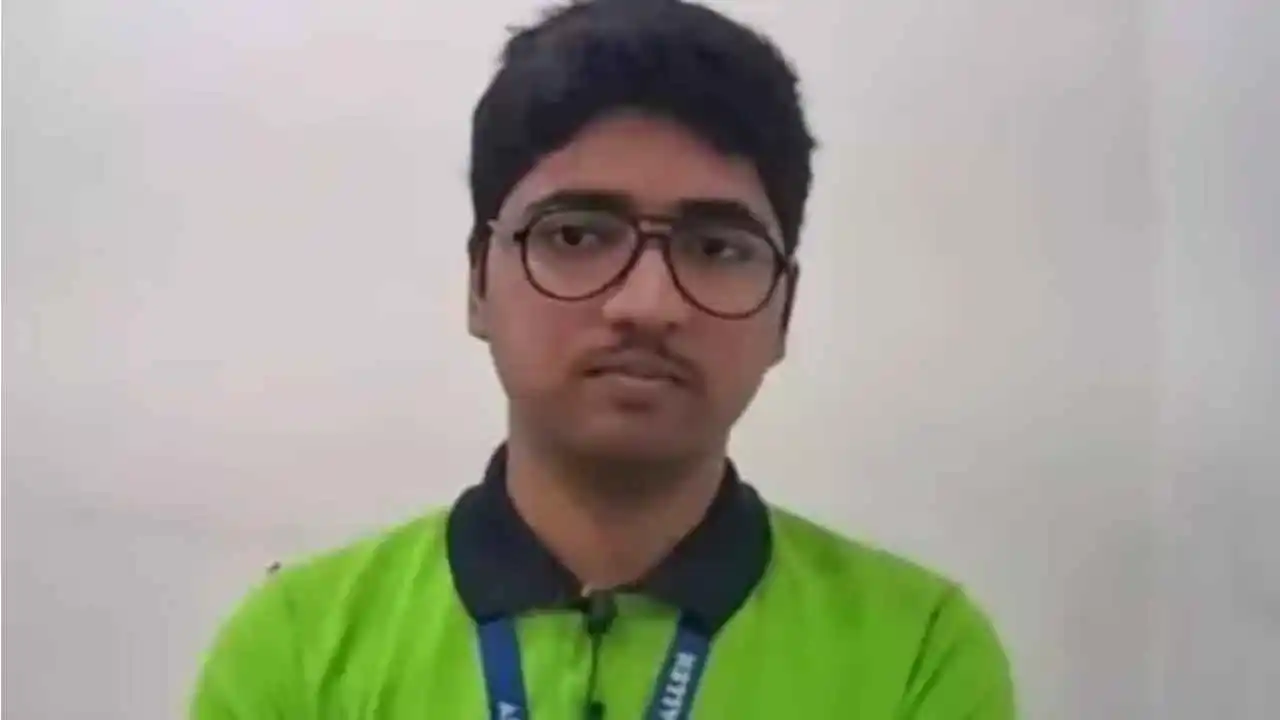
Nilkrishna Gajare, who hails from Maharashtra’s Washim, achieved an extraordinary feat by securing a perfect score of 100 in the JEE Main 2024 examination. His journey from humble beginnings to the pinnacle of success is a source of inspiration for many people.
Nilkrishna Gajare’s father is a farmer and had to discontinue his own education after Class 12 as he faced financial difficulties. Gajare faced financial challenges growing up. However, his unwavering dedication and strategic approach to preparation set him apart from the crowd, which resulted in his remarkable achievement of emerging as topper of one of India’s toughest Engineering entrance exams.
Nilkrishna Gajare had a strategic plan that helped him succeed in IIT-JEE 2024. According to Nilkrishna persistence is important and one should never stop trying until they understand a topic. He said being curious and asking questions are important traits of a good student. He said one should not be ashamed of asking questions.
Nilkrishna spent around 10-15 hours every day studying on his own for the JEE Main exam. He mentioned that he used his class notes for Physics and Physical Chemistry. For organic chemistry and inorganic chemistry, he relied on both notes and practice questions.
As for Mathematics, he believed that practicing regularly was the most important thing for him. Other interests of Nilkrishna include archery. He has participated at both state and national levels, and he finds joy in the sport. He said archery helps him understand the importance of focusing his attention on his goals. Nilkrishna likes watching movies and said they are a great source of enjoyment and relaxation.
He likes to watch a movie after exams and occasionally treats himself to one each week too. Gajare aims to keep up the pace for the JEE-Advanced exam and hopes to get into the IITs. He said he wants to secure admission in IIT-Bombay in the computer science branch.
2024 Lok Sabha Elections
Lok Sabha elections: Samajwadi Party chief Akhilesh Yadav files nomination from Kannauj
The Samajwadi Party has announced Akhilesh Yadav as its official candidate for the Kannauj Lok Sabha seat today
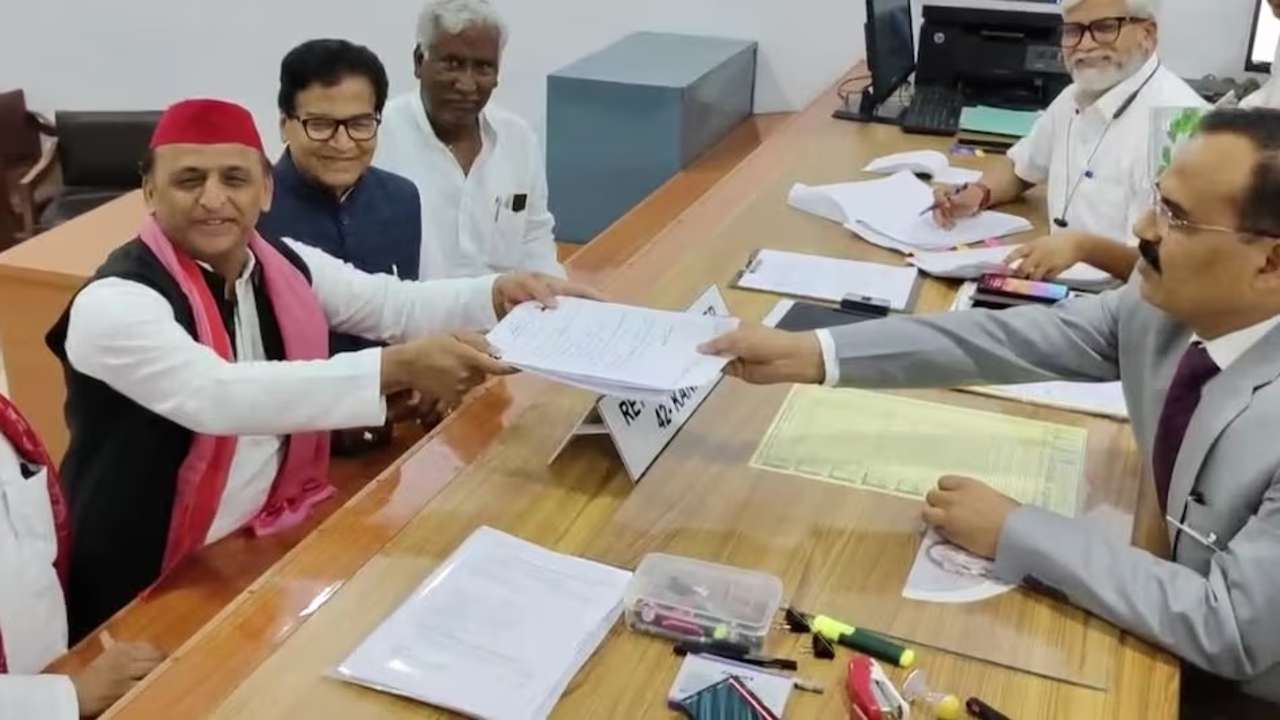
Samajwadi Party (SP) chief Akhilesh Yadav, submitted his nomination for the Kannauj Lok Sabha constituency ahead of tomorrow’s second round of voting. In front of Ram Gopal Yadav and other party leaders, the chief of the SP, who had previously contested the seat in 2000, 2004 and 2009, submitted the nomination.
Speaking with media, Ram Gopal Yadav said that SP would win the seat by a huge margin. The BJP candidate might lose his deposit in the seat, he said.
The Samajwadi Party has completely reversed its earlier plan to field former Mainpuri MP Tej Pratap Singh Yadav as their candidate, which is a significant political development.
Earlier, Akhilesh Yadav told reporters, people will find out when the nomination takes place, in reference to the speculations that he will contest for the seat. The historic victory of Kannauj is the subject of inquiry.
The former chief minister continued, the people have decided that the India bloc is coming as the future and the BJP will be history in this election.
Notably, elections for the Kannauj seat are scheduled for May 13, which would intensify the political drama that is now playing out in Uttar Pradesh. Previously regarded as the Samajwadi Party’s stronghold, the seat was lost by the party in the 2019 election when Subrat Pathak of the BJP won with a resounding victory.
The candidates competing for the following Uttar Pradesh seats will find out their destiny in the second round of voting, which is scheduled for tomorrow, Amroha, Meerut, Mathura, Baghpat, Aligarh, Ghaziabad, Gautam Buddh Nagar, and Bulandshahar.
Notably, two Bollywood celebrities running as BJP candidates in the second round are Hema Malini from Mathura and Arun Govil from Meerut. There are 91 contestants from UP competing in the second phase.
The seats in Gautam Buddha Nagar and Mathura are up for grabs, with a maximum of 15 applicants per seat. In Bulandshahr, six candidates are vying for the presidency. There are twelve contenders running in Amroha, eight in Meerut, seven in Baghpat, and fourteen in Ghaziabad and Aligarh.
1,67,77,198 votes will decide these candidates’ fates.
-

 India News18 hours ago
India News18 hours agoLandslide hits Arunachal Pradesh, highway linking Indo-China border affected
-
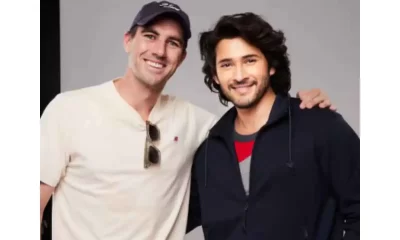
 Cricket news11 hours ago
Cricket news11 hours agoTelugu superstar Mahesh Babu meets SRH captain Pat Cummins, says it is an absolute honour
-
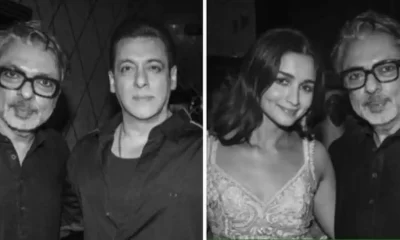
 Entertainment17 hours ago
Entertainment17 hours agoBollywood stars Salman Khan, Alia Bhatt, Rekha, Sonakshi Sinha, Aditi Rao Hydari attend Sanjay Leela Bhansali’s Heeramandi premiere
-
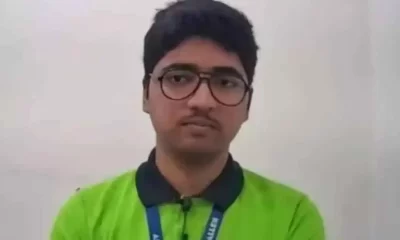
 Education16 hours ago
Education16 hours agoFarmer’s son Nilkrishna Gajare Nirmalkumar from Maharashtra scores 100 NTA score in IIT-JEE Mains 2024
-

 India News19 hours ago
India News19 hours agoTamannaah Bhatia summoned in illegal IPL streaming app case, to appear before cyber cell on April 29
-
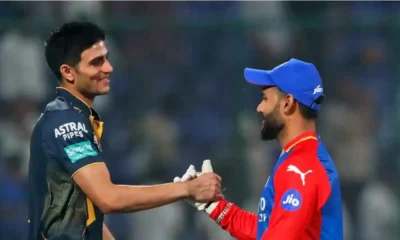
 Cricket news19 hours ago
Cricket news19 hours agoIPL 2024: Rishabh Pant, Axar Patel score half centuries as Delhi Capitals beat Gujarat Titans by 4 runs
-

 2024 Lok Sabha Elections17 hours ago
2024 Lok Sabha Elections17 hours agoBihar: Election Commission extends voting timings for 4 Lok Sabha seats due to heatwave
-

 Entertainment14 hours ago
Entertainment14 hours agoAamir Khan to begin shooting in Delhi for Sitaare Zameen Par next month

